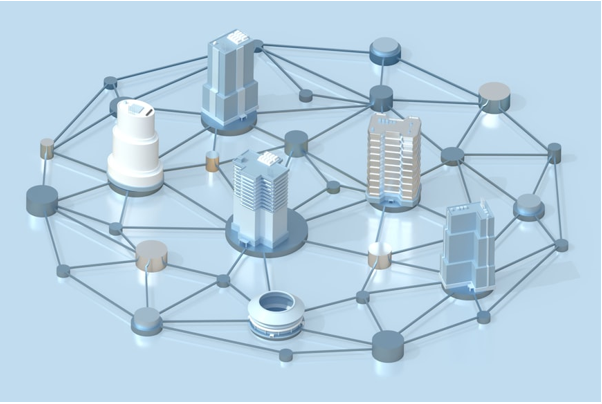Industrial networking standards have enabled uninterrupted connectivity. They have enabled real-time data transfer and control across a variety of industry systems. These standards are driven by a combination of technologies like Artificial Intelligence and Internet of Things (IoT).
Industrial networking standards are rules and protocols used to govern the communication between devices. So, it is used mainly in industrial settings for enabling the automation of machines, sensors, and controllers.
Industrial automation exporters like Siemens offer a number of networking protocol technologies to streamline plant operations. Keep reading to learn about them.
Why Are Industrial Networking Standards Important?
The networking standards ensure reliable and uninterrupted communication between industrial devices even in the harshest conditions. The standards are essential for live control and data exchange.
Industrial devices can come from different manufacturers. But it is important that the devices are compatible for interaction with each other. Otherwise, data exchange and process automation would not have been possible.
Industrial Communication Technologies
Here are the key communication technologies used in industrial settings.
|
|
Fieldbus Systems | Industrial Ethernet | IoT-Based Protocols |
| Purpose | Used for connecting field devices to control systems. Built for real-time and predictable control or communication. | Standard Ethernet is adapted for use in industrial applications. Suitable for strong and high-speed data exchange in harsh conditions. |
Designed to facilitate communication between diverse connected devices in IoT settings. |
|
Features |
(i) High strength and reliability in adverse environments.
(ii) Real-time communication in low-latency conditions. |
(i) High-speed transmission of data in harsh environments (For example, Siemens Industrial Ethernet).
(ii) Scalability support for large networks. (iii) Can be modified for real-time applications. |
(i) Efficient for resource-constrained devices due to light weight.
(ii) Long-range connectivity with low power consumption. (iii) Supports a large number of connection devices. |
|
Connection |
Using serial communication, like twisted pair cables. | Using Ethernet cables, like RJ45 connectors. | Using a wireless connection in environments that don’t support cables. |
| Standards | Modbus, CC-Link IE | EtherNet/IP, PROFINET, EtherCAT |
OPC UA, TSN |
Table 1: Overview of Three Key Industrial Communication Technologies
Key Standards Shaping Global Automation
Here are the purposes and applications of key industrial networking standards.
|
Standard |
What It Does | Industries/Use Cases |
| EtherNet/IP | Device compatibility and real-time control | Manufacturing and automotive |
| EtherCAT | Fast and reliable communication with precision control |
Robotics and motion control |
| PROFINET | Dependable and high-speed networking (For example, Siemens Industrial Ethernet) |
Factory automation process control |
|
Modbus TCP/IP |
Simpler and legacy-friendly communication | HVAC, energy, and utilities |
| CC-Link IE | High-performance industrial networking based on Ethernet | Control applications and automation |
| OPC UA | Cross-platform data exchange | Industrial IoT and enterprise-level integration |
| Time-Sensitive Networking (TSN) | Real-time data exchange over standard Ethernet | Motion control and robotics |
Table 2: Overview of Key Industrial Networking Standards
Global Impact on Industrial Automation
Check out the global impact of the networking standards on industrial automation.
Standardization Leads to Scalability
Industrial networking standards have enabled standardization. As your automation systems get standardized, you can easily replicate them. You can reproduce systems across locations and facilities. This will support your scalability needs.
For example, using standards like PROFINET, Siemens Industrial Ethernet establishes a common infrastructure and protocol for communication. System deployment is quicker. The need for major customization and integration is reduced. Standard interfaces and components can be purchased in bulk. This lowers cost through economies of scale.
Interoperability Across Vendors
Industrial network standards have improved compatibility among systems and components. You can integrate components produced by different vendors. So, you will enjoy greater flexibility in choosing the right solutions.
The configuration and setup of automation systems also become simple. Devices can be easily integrated and connected through standardized interfaces. For example, Siemens Industrial Ethernet is founded on standard Ethernet infrastructure. Protocols like UDP and TCP/IP are used, which are the same as in standard Ethernet.
Support for Digital Twins & Smart Factories
Industrial network standards allow the collection and transmission of data in real time. This makes it easy to continuously monitor equipment performance and manufacturing processes. This means that data modeling and analysis can also be done. And this, in turn, enables digital twins.
Digital twins are virtual portrayals of physical objects or processes. So, you can use digital twins to simulate scenarios and improve predictive maintenance. As a result, your industrial operations will be optimized.
Emerging Trends Enabled by Networking Standards
The impacts of industrial networking standards must be clear to you now. So, check out the emerging trends that the protocols have enabled.
Edge Computing & Distributed Control
Edge computing is about storing and analyzing data around the source device. When edge computing is combined with Distributed Control Systems (DCS), faster response time can be achieved. And that also lowers dependency on centralized cloud infrastructures.
5G & TSN Integration
As you have already learned, TSN is a networking standard for reliable, low-latency communication. So, you can integrate 5G with TSN for application in ultra-low latency communication needs. You can apply it in remote surgery. It is also applied to autonomous vehicles.
Cybersecurity Protocols
Storing cybersecurity protocols is increasingly being incorporated in industrial networking standards. This is enabling stronger data protection measures. So, systems can be better protected from threats using the standards. It has enabled “zero trust networking,” which is about always verifying and never trusting. The standards have also enabled enhanced encryption.
Green Automation
The emphasis on resource-aware and power-efficient networking is growing. And solutions are also being developed to meet the demands. Industrial networking protocols are making it easy to optimize network infrastructure. So, waste generation and energy consumption can be reduced.
Choosing the Right Standard: What Companies Should Consider
Here are the factors you must consider when choosing the right standard for your organization.
|
Factor |
What To Assess |
|
Existing infrastructure |
Check for compatibility with your current devices. |
| Industry compliance |
Check for standards specific to your industry sector. |
|
Real-time needs |
Check if there is support for real-time needs like batch processing and precision control. |
| Vendor support |
Check if the vendor offers an ecosystem of compatible software and hardware. |
Table 3: Factors to Consider When Choosing Industrial Standard
Ready to Adopt Industrial Networking Standards?
Industrial networking standards can be adopted by organizations using industrial Ethernet switches like the Siemens Industrial Ethernet. Industrial networking protocols will enable high-speed, reliable connections.
You will enjoy fast and deterministic communication and control even in harsh conditions. The networking standards also enable low-latency applications. You can reach out to industrial automation exporters for the systems needed to adopt the networking protocols.



